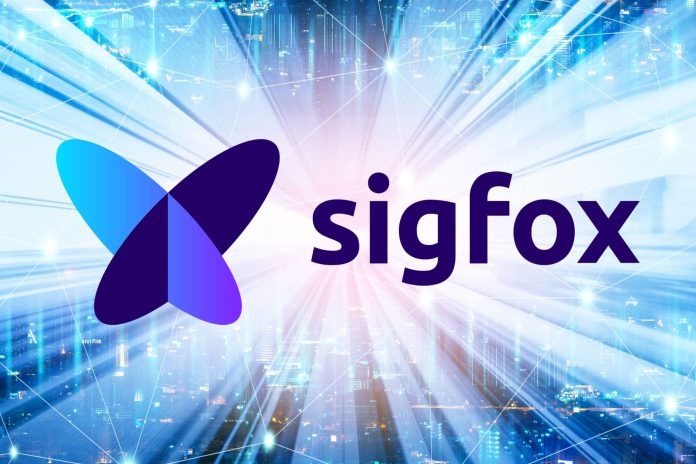Sigfox was just ahead of its time; the high-cost control-freakery of its business model has been a necessary consequence of its seismic undertaking, a decade ago, to create a market from scratch. But that work is finished, almost; demand among global enterprises for IoT connectivity is about to explode, and the French firm is subtly shifting gears to load its global network infrastructure and finally make good on its promise of ‘massive IoT’.
That is the word from the company’s top brass, which rejects the idea that a recent management reorganisation has brought a wholesale change in strategy. Nothing has changed, says Sigfox, from its original blueprint to connect the world; it has just taken the world longer to catch up, and the company’s new strategy to ‘industrialise’ operations, timed for this industrial awakening, has been scheduled from the start.
That, then, is the defence – or just the explanation, depending on how the Sigfox narrative is perceived. The sale of its own operating companies (in Germany late last year; in France and the US in short course); the new deal to outsource the company’s cloud infrastructure to Google; most symbolically, the exit of co-founder Ludovic LeMoan in February – these are just logical steps along the same road, it says, mapped out all those years ago.
Jeremy Prince, formerly head of the Sigfox-owned US operation, handed the ‘keys to the lorry’ when Le Moan departed, says: “There is a continuity through these phases, with massive IoT as the end goal. And there is continuity through the management changes, too.” Speaking with Enterprise IoT Insights last month, he is joined by Franck Siegel, deputy chief executive officer at the firm; the pair have been helping to steer Sigfox all through, he says.

“Franck was chief financial officer, I was chief strategy officer; the structure hasn’t changed. The question is about Ludovic.” Indeed, it is. Because the whole Sigfox story – the investment rounds, the infrastructure building, the connectivity targets, the business model, the corporate culture – traces back to him. His departure was trailed by reports about misconduct and harassment, and the new leadership has been roundly applauded in Sigfox circles.
Prince says: “Ludovic was there from the start. He was behind the dream – the think-big person. He likes to start businesses, set goals; Sigfox was not his first. He was interested in the initial phases, in the build and expansion. He was less interested in this new connectivity phase, towards massive IoT. Because it is an industrialisation process. We have 18 million ‘things’ on our network, but the aim is to have hundreds of millions, even billions.
“Which means the company needs to scale – technically, but also in terms of processes and people. And that is probably something Ludovic was less interested in, and less comfortable with. The board, as it was, talked through, and he decided he’d rather give the ‘keys to the lorry’, as we say in France, to the rest of the team to go through this new phase. He remains a shareholder, and involved as such. But there is no conflict, if that is a hidden question.”
It was, kind of – although hardly, as well, given what has been written. But the response holds, that the company’s fresh direction is not a new departure, as such, but a junction-turn on the same road. “Yes, we are in a new phase; but there is no disconnect, or rupture,” says Prince. For Sigfox, massive IoT is a journey in three parts: an initial ‘build’ phase to ‘kick the tyres’ on the underlying tech (2010-14); an ‘expansion’ phase to construct the network (2014-20); and an overlapping ‘connectivity’ stage to load traffic onto it (2018 onwards).
The second phase, just finished, has seen Sigfox launch in 72 countries (covering 1.3 billion people, it says), which represents wider-area global coverage than offered by rival low-power wide-area (LPWA) technologies. “We are the only operator to ever achieve a 72-country network, where a device, attached to a shipping container, say, can go from Le Havre to Houston to Singapore on the same network, communicating the same way,” says Prince.
This expansion phase is also where most of the money has gone, presumably. Sigfox raised $311 million in five venture rounds in the period to 2016, including $160 million on its last call, making it the mid-decade darling of the IoT startup scene. The cap-ex logic looks plain; “because without a network, there is no IoT,” says Siegel. But shareholders have had their feathers ruffled by the long investment cycle, and slow returns.
Sigfox posted €90m in losses last year, including €20m in write-offs from the sale of its German operation to Swiss operator Heliot Europe, acquired as part of the deal by Luxembourg venture firm Cube Infrastructure Managers. Sigfox hits back: these numbers are “not [a] reflection of operational results,” it says, but of “adjustments to the balance sheet of a company that has invested significantly during… to deploy a unique technology in 72 countries”.
It reasons: “This would not have any cash impact, and therefore shouldn’t be a concern… What is meaningful… is our connectivity revenues have significantly grown by over 50 percent year-on-year for these past three years, even during this Covid-19 period, showing the path towards massive IoT and demonstrating the growing adoption of Sigfox technology. [It] is also a result of the strategy in place, which has not changed, but entered a new phase.”
Siegel explains: “The first eight years were to build up the foundation to accelerate in this third phase. And since this phase started, in 2018, the company has gone from about 230 devices to 18 million devices, and from lots of proofs to real working contracts. We have gone from a few hundred customers to more than 1,500 customers, and [traffic on the network has gone] from 15 million to more than 70 million messages per day.”
What about the billion target Sigfox has set for device connections by 2023? It was a bonkers target when it was issued two years back, and still looks mad, even if it was only a moonshot to stir the market, and the rank-and-file in sales. Plus, rivals seized on it to make Sigfox look out-of-touch. The new management will not be drawn on targets. “It is better to avoid them, until you can’t. Because, yes, it is sometimes a stick to be beaten with,” agrees Prince.
He adds: “But, if you don’t claim big at the start, then you won’t deliver anything at all. The thing is that, from inception, Sigfox was designed for massive IoT. That hasn’t changed for us, from day one. It is just that IoT has taken longer than anyone expected. Maybe Sigfox should have adapted more slowly, to grow in line with the market – to take a more gradual approach.
“But IoT is arriving now, and poised to be massive. Which is good news for everyone. Because even three years ago, when I joined Sigfox, the customers and the contracts were different. Today, big players are moving into the space, decision making has shortened, and the size of contracts has increased tremendously. All of these are signs that enterprises are finally embracing digitalisation at large and IoT in particular.”

